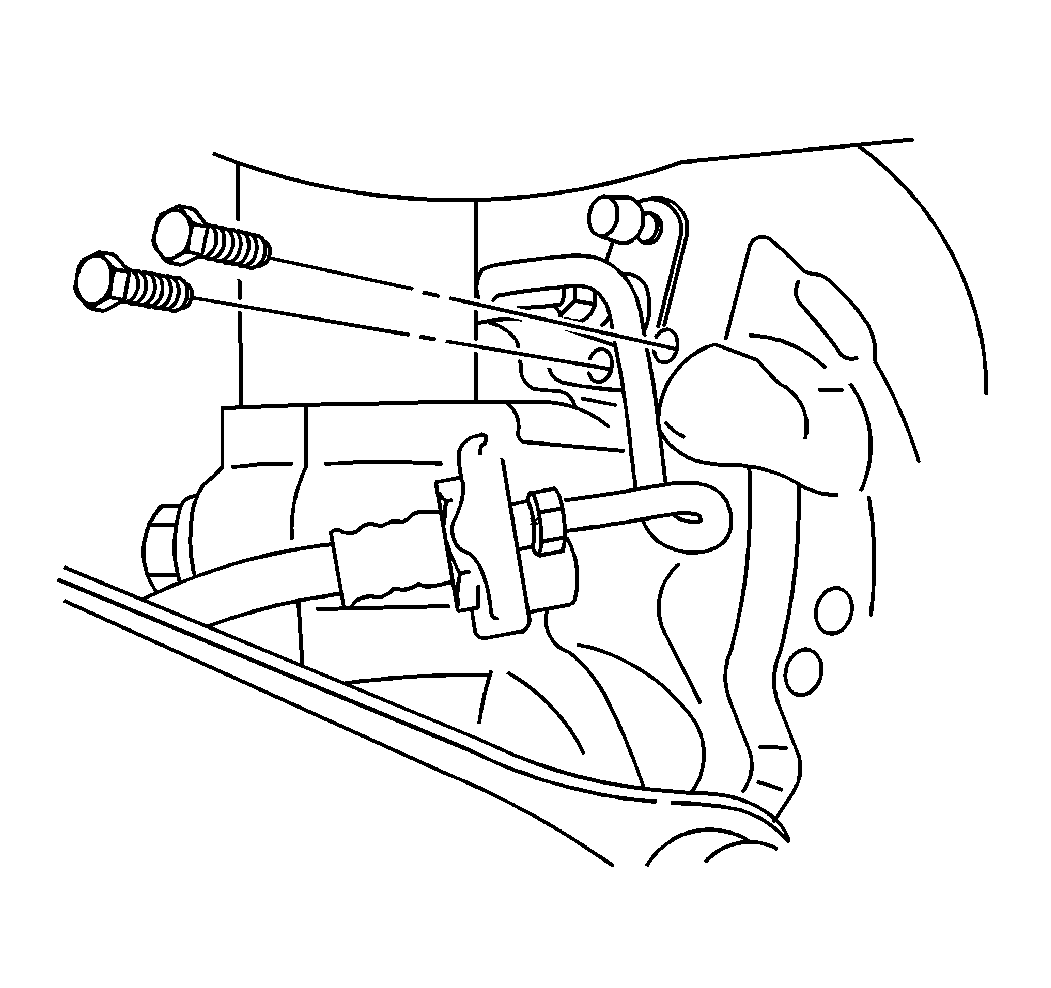For 1990-2009 cars only
Removal Procedure
- Remove the shoes. Refer to Brake Shoe Replacement .
- Clean dirt and foreign material from the wheel cylinder and pipe flare nut.
- Remove the pipe flare nut from the wheel cylinder at the rear of the brake backing plate. In order to avoid fluid spillage, do not fully remove the pipe flare nut.
- Remove two bolts, the pipe flare nut and the wheel cylinder from the backing plate.
- Use the bleeder valve to plug the end of the pipe in order to prevent fluid loss.

Installation Procedure
- Apply GM P/N 12346240, or the equivalent, to the joint seam of the backing plate and wheel cylinder.
- Remove the bleeder valve from the pipe.
- Install the pipe flare nut to the wheel cylinder. Finger tighten the nut.
- Install the wheel cylinder to the backing plate. Secure the cylinder with two bolts.
- Install the bleeder valve.
- Install the bleeder valve cap.
- Install the shoes and the drums. Refer to Brake Shoe Replacement .
- Bleed the brakes. Refer to Hydraulic Brake System Bleeding in Hydraulic Brakes.
- Inspect for leaks.

Notice: Use the correct fastener in the correct location. Replacement fasteners must be the correct part number for that application. Fasteners requiring replacement or fasteners requiring the use of thread locking compound or sealant are identified in the service procedure. Do not use paints, lubricants, or corrosion inhibitors on fasteners or fastener joint surfaces unless specified. These coatings affect fastener torque and joint clamping force and may damage the fastener. Use the correct tightening sequence and specifications when installing fasteners in order to avoid damage to parts and systems.
Tighten
| • | Tighten the wheel cylinder mounting bolts to 7-11 N·m (62-97 lb in). |
| • | Tighten the pipe fitting nut to 14-18 N·m (124 lb in-13 lb ft). |
Tighten
Tighten the bleeder valve to 10 N·m (89 lb in).
